Veteran session bassist speaks on elastic rhythm and understanding the role of the bassist
Exclusive interview with FBPO’s Jon Liebman
July 26, 2021
Simon Goulding is an ace session bassist whose work has taken him all over the musical map. The Bee Gees, Tito Jackson, Eric Marienthal, The Temptations, Engelbert Humperdinck, Rick Astley, and the London Community Gospel Choir are just a few of the artists and ensembles that he’s collaborated with over the years. The English bass player is also a composer, author, and educator who’s released numerous of his own books and albums. Goulding’s most recent solo EP, Quadrant, came out in 2019.
FBPO: How did you become a bass player?
SG: Well, it was a bit strange really because none of my family are musical at all. My dad was an engineer. My mother had a different job. She worked in a school and things like that. I still don’t know where I got the bug from really.
FBPO: Any siblings?
SG: No. It’s a bit of a strange one. I remember watching an Eric Clapton concert on TV, and whenever it’d show the band I’d always be mesmerized by the other band members and what they were doing, even though I was only about 7 or 8 years old at this stage. I’d always be asking, “What’s he doing there?” You know what I mean? I thought the bass was just a big guitar. I didn’t know what it was, and I just asked me dad, “What’s that?” And he said, “It’s a bass guitar”, and I said, “Oh, I’d like to get one.” So he managed to get with a guy at his work who played bass, and he was selling one. It was an old Gibson EB copy, like the old Jack Bruce one. I think it cost about 15 pounds or something like that.
FBPO: How did you go about figuring out what to do with it?
SG: I just kind of got it in my hands. A lot of bass players start on guitar, but I didn’t do that. I kind of jumped straight into the pace.
FBPO: Were you playing along with records?
SG: Yeah, yeah. I got to trying and figuring things out from lifting the needle up and putting it back and spinning cassette tapes back and ruining them obviously.
FBPO: You’re showing your age, Simon.
SG: [Laughs] Yeah, it was a longer and kind of exciting process.
FBPO: Who were your bass influences?
SG: At that time, whoever I was listening to at the time really. I used to listen to a lot of… AC/DC, so obviously people like Cliff Williams. And then I started to get into Clapton and listening to people like Nathan (East) and Duck Dunn and Carl Radle and all the players who played with Clapton, the session guys. Then started to dip my toes into jazz and get into people like Paul Chambers and Jimmy Blanton and John Patitucci and Abe Laboriel and people like that. Once I discovered Abe Laboriel, I mean, it was a kind of a lifetime of being inspired.
FBPO: How did that morph into a career?
SG: I used to go for lessons off a couple of really well-respected local musicians who I really looked up to. One of them wasn’t a bass player. He was a guitar player who, unfortunately, died many years ago, but he used to teach me what was expected of a bass player in a band, which was fantastic training because a bass player would normally get the bass player’s perspective of things. But with this guy being a guitar player and bandleader, I’d get his perspective of things. So I’d get to know what was expected of me, what to play and what not to play.
FBPO: Any takeaways from those days that you still incorporate into your playing today?
SG: Absolutely. He taught me a lot about choice of notes for certain harmonies, which is something that I teach a lot and something that I always try and incorporate into my playing. Note choice regarding tension, how to really build a bass line, how to build a solo. To look at improvising as kind of like a roadmap, where you start in one place and you need to get to another place, but you need to make it as interesting as possible. Kind of like having a bit of a conversation. And you do that by good phrasing and good note choice. The only way to do that is transcribing a lot and listening a hell of a lot. So that’s one thing that I’ve always taken that I learned early on.
FBPO: What’s keeping you busy these days?
SG: I’m working on my fourth album at the minute. The upcoming album is called Two Masks. And again, that’s a very different kind of step than Familia or the EP, Quadrant. The new album, it’s a bit different. It’s still in like the Latin kind of fusion vibe. I’ve got some different guests on this. Nick Davis guests on it, a guitar player, a good friend of mine. And Gareth Moulton, who’s a guitar player with a band called Wang Chung.
FBPO: Everybody Wang Chung tonight!
SG: Yeah, yeah. [Laughs] Dance hall days and things like that. So Gareth’s on it. The band leader from Spice Fusion, Simon Niblock’s on it. Jon Brant, drummer Manolo Gonzalez from Cuba is on it. It’s sounding pretty good. I’m really happy with that. I’d like to have it out by the autumn.
FBPO: Tell me about your gear.
SG: I used to use Trace Elliots back in the early days because I’d always see those on TV. You’d see Ampeg SVTs or Trace Elliots. Then I moved over to using Hartke equipment and I used Hartke for a long, long time, which was great. And then I was approached by an amp company over in Poland called Taurus. I was having a luthier build my signature model bass at the time, which is the SGC, a 6-string by a great luthier called Tito Dalmedo, over in the Northwest of the UK. He put in the bass a Taurus onboard preamp, and I’d never heard of them before. Then, out of the blue, I got an email off this company in Poland saying, “Would you be interested in trying out our amps and pedals?” And I said, “Of course!”
FBPO: What kind of strings do you play?
SG: I play Rotosound. Sometimes I use the flat ones, not a lot, mainly on one of my P basses. I’ll put flat ones on it sometimes if it’s for a session or a particular gig, like on one of the last Temptations and Supremes tours we did over in Germany a few years ago.
FBPO: You definitely want flats for those!
SG: Yeah. The flats with the P bass. And that was just perfect for that gig.
FBPO: What do you think is important for someone to know who wants to learn to play the bass?
SG: I would say, really, what was drilled into me when I was learning and coming up in local bands, which is really understand the role of the bass in the band. Understand that it’s the bridge between the rhythm and the harmony. Really get to grips with both of those aspects, both of those elements. Get to know them like the back of your hand. What exactly can you play that is going to complement what the piano player or guitar player’s playing? All great bass lines tell a really great story. People like Jamerson and people like Chuck Rainey and people like Abe Laboriel, all the great lines, iconic bass lines, Carol Kaye another one. They all tell a story because they all use great rhythmic foundations and great harmonic color in the line. So I’d definitely say spend a lot of time learning rhythm and how it works, and a lot of time learning harmony and how that works.
FBPO: What would you be if you weren’t a bass player?
SG: To be honest, Jon, I don’t really know. My dad was always into sports, in particular rugby. He always used to take me to rugby matches. I was really into it at the time and I wanted to play it, but it was such a physical game. I didn’t fancy being hit in the face every week and getting teeth knocked out and a broken nose. My dad played, so I heard about all the things that he went through with injuries. So I decided on the safer route, which was to get a bass guitar.
See Jon’s blog, with key takeaways from this interview here.
Simon’s Quadrant EP is available here:
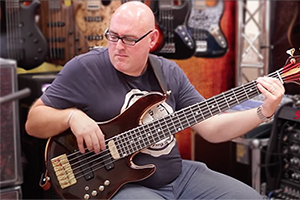
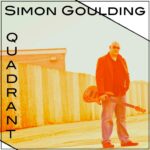

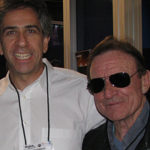


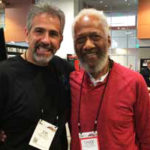
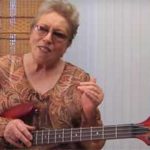
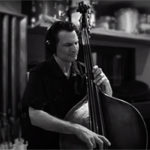
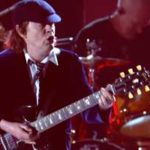
Nice interview with Simon G – I had not heard his work. So many players, so little time,,,